Scarlet Macaws Were Traded From Mexico to the Four Corners Area
Feathers were used in Ancient Pueblo rituals
Ancient indigenous people traded turquoise with people in Mesoamerica for colorful scarlet macaws. Macaws are unique for several reasons: the birds themselves and their feathers have been used for more than 1,000 years and are instrumental to Pueblo rituals, they are not native to the Southwest and had to be imported from the south.
Two of my favorite things are exploring this world and BIRDS. I do birdwatch but I have three exotic birds as part of my family (one of them is a blue-and-gold macaw), and I volunteer regularly at exotic bird rescues in southern Arizona. When I began learning about scarlet macaws in the ancient Southwest I was enthralled.
Trading with Mesoamerica
Archaeologists have known for more than a century that the Ancient Pueblo people of the American Southwest acquired goods from Mesoamerica, including marine shells from the Gulf of California, raw copper and crafted copper bells from west Mexico, cacao from the Neotropics, and tropical birds. Mesoamerica is the term anthropologists use to refer to Mexico and parts of northern Central America (central and southern Mexico, all of Belize, Guatemala, El Salvador, and parts of Honduras, Nicaragua and Costa Rica).
Scarlet Macaws
The scarlet macaw (Ara macao) is a brightly colored parrot that measures almost 3 feet from the top of its head to the tip of its tail. It’s a social and intelligent bird that can live up to 50 years in the wild and can imitate human speech.
My macaw yells “HELLO!” in the mornings when he wants me to wake up and will say “want more!” when he sees me eating or hears the crinkle of a food package.

Historically, scarlet macaws once inhabited the eastern Caribbean coast of Mexico which is where experts think the imported birds came from. They are virtually gone from there now.
How Do Experts Know That Ancient Indigenous People Kept Macaws
Archeologists have found macaw bones and feathers dating from 300 CE to 1450 CE at sites ranging from Utah to Northern Mexico.

During excavations of ancient sites in the Southwest, skeletal remains of more than 400 scarlet macaws have been uncovered with most concentrated in Chaco Canyon (35 macaws), the Mimbres region of southwestern New Mexico (10 macaws), the Mogollon Rim area of east-central Arizona (27 macaws), Wupatki in north-central Arizona (22 macaws), and Paquimé (a whopping 322 birds) in northern Mexico.

How Did the Bird Get to the Southwest?
It’s possible that traders made multiple, lengthy marches with the birds that would require at least a month’s travel each way. Alternatively, the birds could have been passed from village to village, using intermediate rest stops on the journey however this would have prolonged the excursion even further. I’ve traveled with one of my parrots over a thousand miles in my car and it wasn’t a pleasant experience for either of us. I can’t imagine walking that distance with a large demanding parrot.
Scientists have studied the skeletons of the birds and the majority of them were young. It is unlikely that a bird being imported from Mexico would be that young due to the length of the journey. Therefore, they hypothesized that the majority of the macaws were bred in the area.
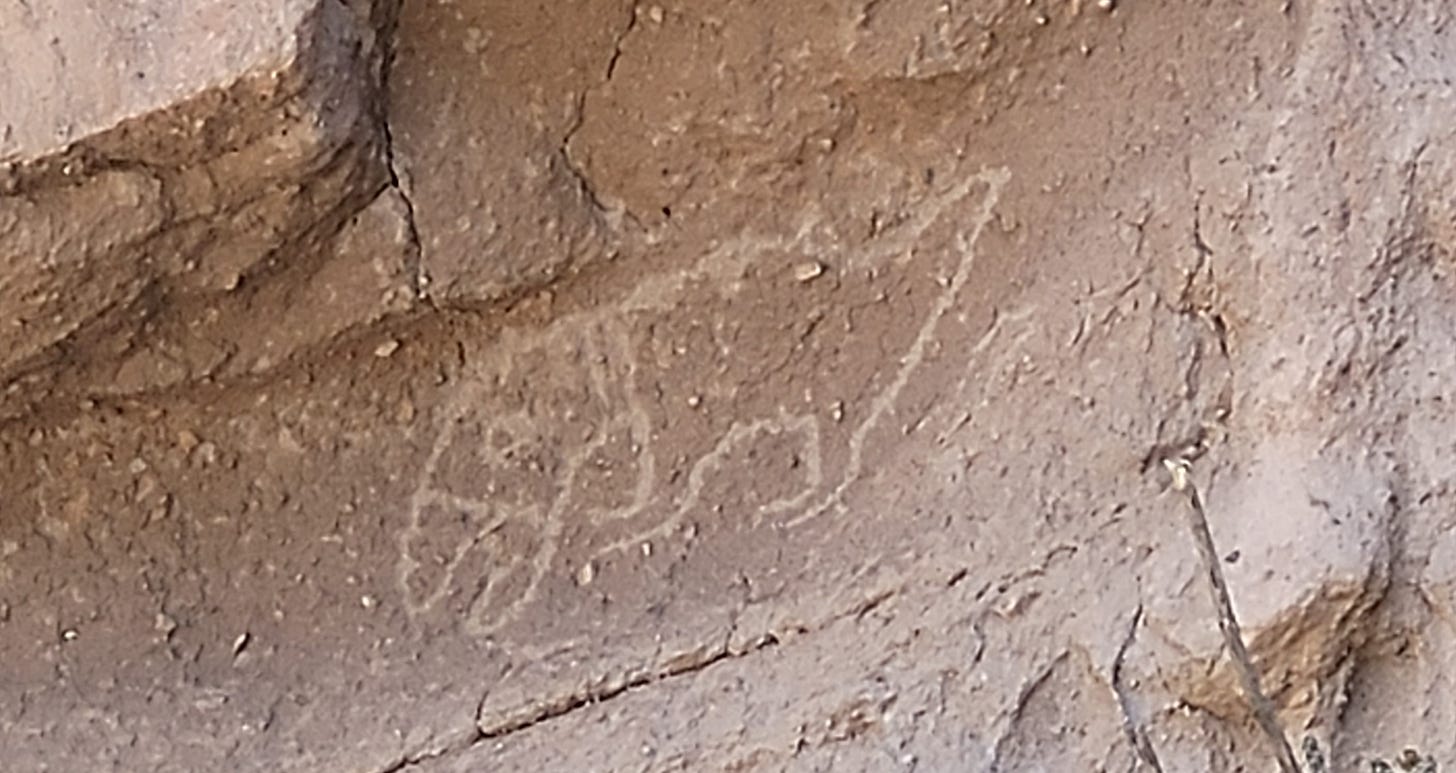
Captive Breeding in Paquimé in Chihuahua, Mexico
Captive breeding of scarlet macaws occurred in Northern Mexico at Paquimé (also called Casas Grandes in the Mexican state of Chihuahua). This is considered one of the first sustainable systems of non-agricultural animal husbandry in this region. Breeding pens, perches, bones, and eggshell fragments have been excavated.
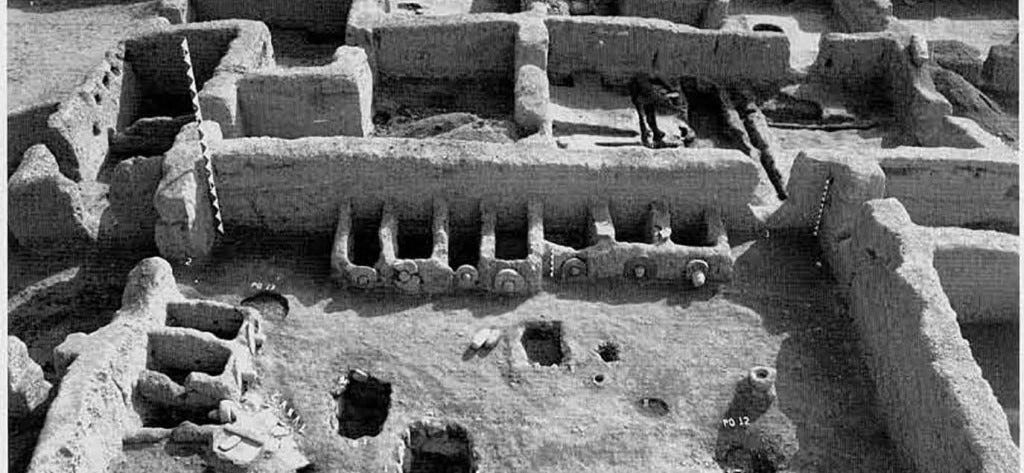
Experts say that clear evidence for scarlet macaw breeding within this network only occurred in this settlement between 1250 and 1450 CE. This is much later than many of the Four Corners area sites namely Chaco Canyon (around 900 CE). So how did they get their birds?
Scientists Look at the Birds’ DNA to Further Prove Captive Breeding
I read two very interesting scientific papers on where the macaws for Chaco Canyon, New Mexico came from (Early procurement of scarlet macaws and the emergence of social complexity in Chaco Canyon, NM | PNAS and Archaeogenomic evidence from the southwestern US points to a pre-Hispanic scarlet macaw breeding colony | PNAS).
What they did was take the usable DNA from the skeletons of the birds at Chaco Canyon and compared it to current scarlet macaw populations in the wild. The results showed that 71 percent of the birds likely shared a maternal lineage. The likelihood of plucking a group of birds from the wild with this shared DNA would be almost impossible.
The results suggest that people at a settlement dating between 900 and 1200 CE managed a macaw breeding colony in the Southwest and distributed these birds throughout the area. The undiscovered area is likely in Southwest New Mexico’s Mimbres Valley. It’s exciting to know that an undiscovered settlement is out there, somewhere.
Native Peoples’ Current Use of Macaw Feathers
Today, macaw feathers are still used to decorate ceremonial objects. For some Pueblos, macaw feathers symbolize the sun and are necessary for solar ceremonies. Macaw feathers are valuable. The Pueblos pay as much as $60 for a single center tail feather, and other feathers sell for $1 to $50 depending upon type, color, and condition. As you can imagine, this can encourage smuggling of macaws.

A non-profit organization called Cultural Survival has started the Macaw Feather Project and accepts naturally molted macaw feathers from zoos and breeders. The feathers are sent to the Pueblos on request and as available. The organization is the sole supplier of macaw feathers for several Pueblos, and the number is growing. This is helpful to the Pueblos and has hopefully cut down on exotic bird smuggling.
The website says that scarlet, military, and blue-and-gold macaw feathers are requested. I just found out about this program and will be contacting them as I have a feather farm in my household and am willing to donate Morgan’s molted feathers. Morgan has only been part of my flock since January and already I have some valuable feathers.
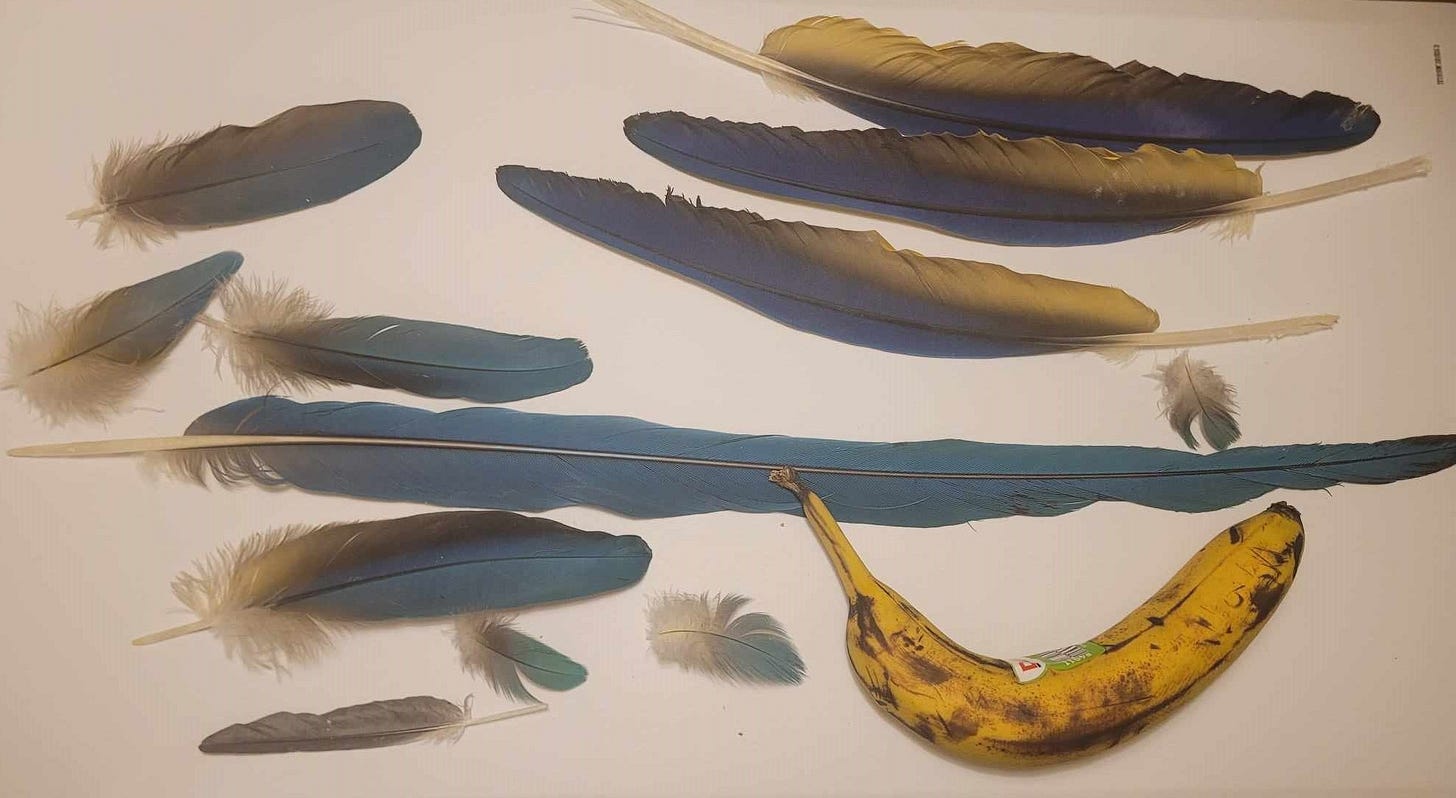
Next Time
The Painted Desert Inn in Petrified Forest National Park off Interstate 40 in Arizona is turning 100 years old. In 1975 it was ordered to be torn down; however, it is now a national historic landmark. Next time, let’s take a look at this gem on the Painted Desert.

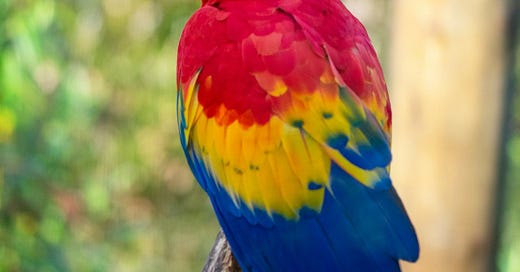




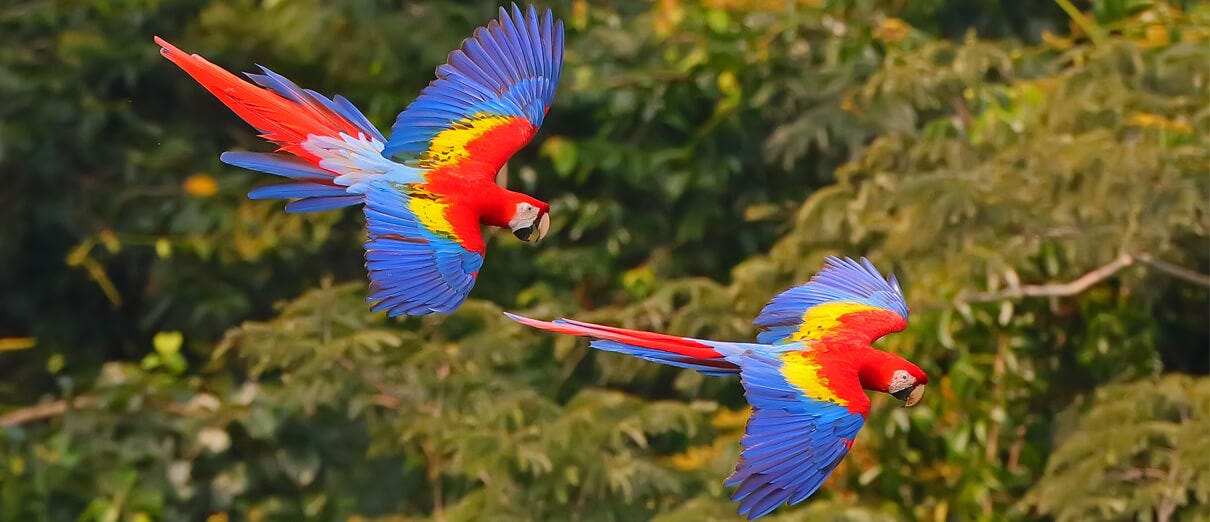
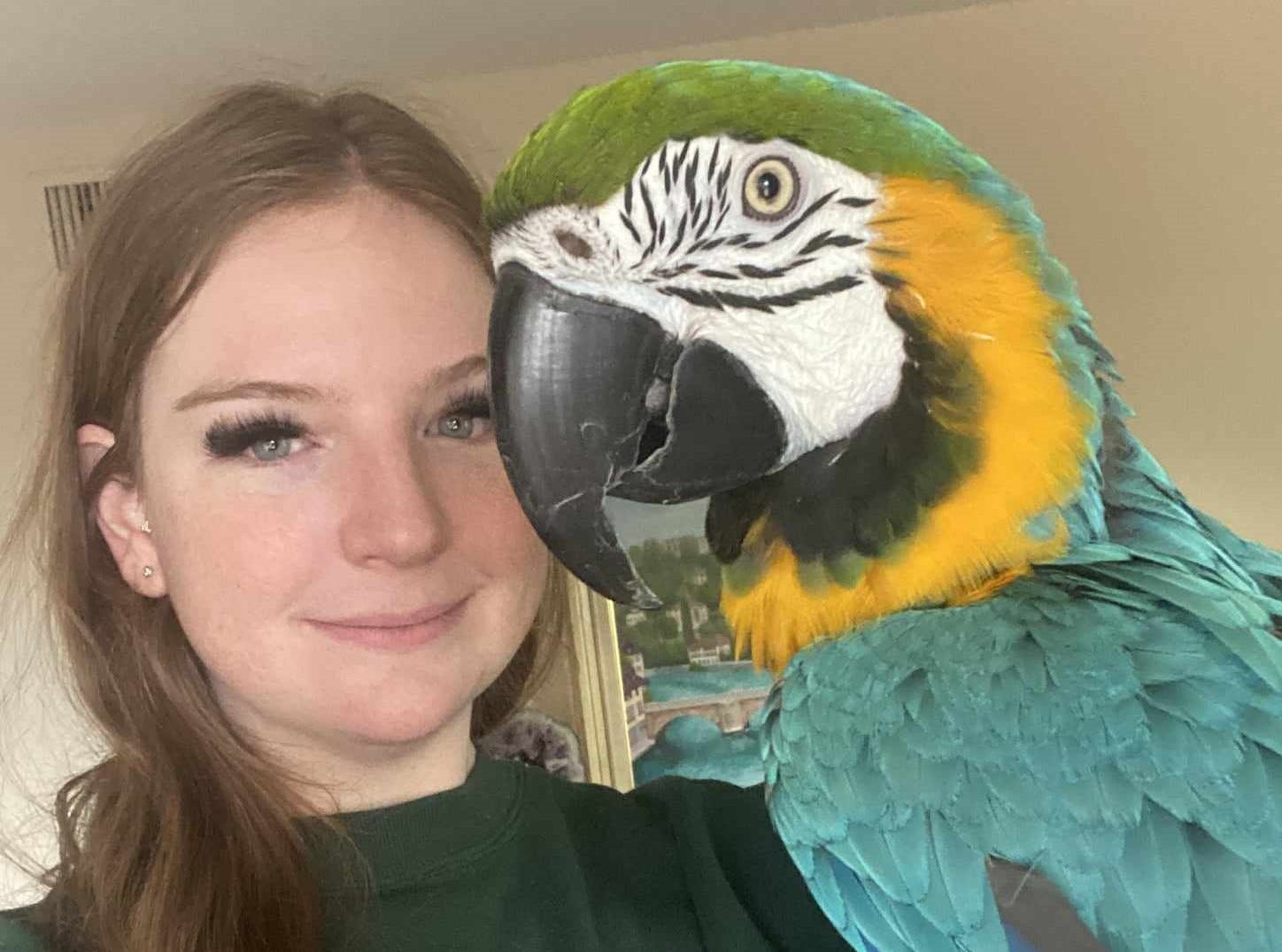
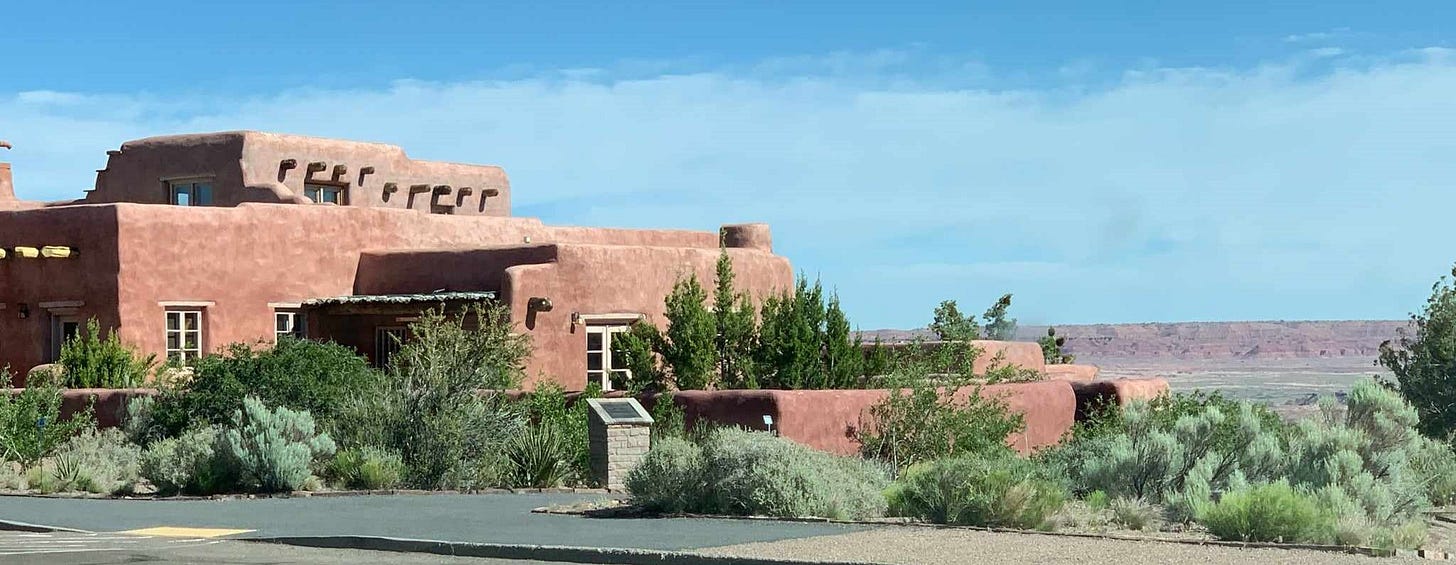
Jan- I love how you incorporate Macaws into this piece. They’re one of my favorite animals! 🙌🏼
Thank you, Jan, I enjoyed this and learned so much! I was thinking as I read that your writing is informative and fun, and about topics I care about. Did you mention once that you had written a book? I apologize for not remembering.